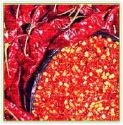 Long and long ago, there were two caterpillar people who loved each other very much, but as with all living things, one of them died. The caterpillar woman mourned the loss of her husband. She didn’t want to talk to anyone, didn’t want to be around anyone. She wrapped her sorrow around her like it was a shawl and began walking. All the time she was walking, she was crying. For twelve moons (one year) she walked, and because the world is a circle, she returned to where she had started. The Creator took pity on her and told her, “You’ve suffered too long. Now’s the time to step into a new world of color — a new world of beauty.” The Creator clapped hands twice, and she burst forth as the butterfly. Just so, for many Native people, the butterfly is the symbol for everlasting life and renewal.
Long and long ago, there were two caterpillar people who loved each other very much, but as with all living things, one of them died. The caterpillar woman mourned the loss of her husband. She didn’t want to talk to anyone, didn’t want to be around anyone. She wrapped her sorrow around her like it was a shawl and began walking. All the time she was walking, she was crying. For twelve moons (one year) she walked, and because the world is a circle, she returned to where she had started. The Creator took pity on her and told her, “You’ve suffered too long. Now’s the time to step into a new world of color — a new world of beauty.” The Creator clapped hands twice, and she burst forth as the butterfly. Just so, for many Native people, the butterfly is the symbol for everlasting life and renewal.
A traditional Sahaptin story retold by Coyote Cooks
Just as life repeats art, this legend sets a pattern the Sahaptin people use in accepting the loss of a loved one.
By the way, writing about the Butterfly legend was actually the first “official” (i.e., academic) publication I ever did, through the University of Manitoba Medical Journal. My mentor, Carolyn Atteneave, recommended me to take over her obligation to submit an article. Since then, I’ve tried to support her effort by asking others to work with me in publishing something professionally for periodicals, or textbooks.
When a family member dies, a Palaxsiks is held. The mourning ceremony of the Palaxsiks follows the “map” of this legend. After the body has been buried, the surviving spouse, usually within a week of the burial, will be stripped of his/her regular clothing behind a blanket screen. Relatives from one side of the family have brought new clothes of dark colors that are used to dress the widow/widower. This indicates the cocoon stage. The hair is cut. But since hair continues to grow, and at one point, will return to its original length, this represents the psychological and spiritual healing that is taking place internally. Incidentally, the cut hair and the dark clothing also serve to mark an individual in the mourning process, so community members can acknowledge this and act accordingly. However, when a non-Native client begins therapy, a provider will have no way of knowing if the client is experiencing bereavement until a history is taken, and even then it may not come up immediately.
At the end of one year, there is a closure ceremony where the family members who received the clothes during the first ceremony bring new clothes of bright colors to dress the widow/widower. The bright colors represent the wings of the butterfly and also signify that the time of bereavement is over, and the individual is freed of the restrictions of the previous year. For example, when in mourning, an individual is not permitted to take part in social dancing. After the end of the year’s observance, the headstone for the dead is usually placed.
 Community members are exposed to the story throughout the year. Like many tribal nations, Sahaptin reservations will have dances that are considered “theirs” apart from the conventional “powwow” style competitive dancing that is acknowledged as “outside” and brought back during World War II where they were shared by Native soldiers from Oklahoma. Just so, one such traditional dance is the “wilik wilik waashasha,” or Butterfly Dance. It is performed by adolescent females who line up single file. They pull their colorful fringed shawls over and begin to cry out loud as they walk in a circle. Again, this represents the cocoon. The head drummer carefully watches, and when the lead dancer completes a circle, he or she will strike the drum twice. This is signal for the dancers to spread their shawls across their shoulders. They then begin a skipping dance as the song’s rhythm changes from its mournful march to a bright pattern. The legend is normally told as part of the performance. Just so, community members grow up hearing the legend told repeatedly, even when there are no deaths to be observed. As a result, the knowledge of how to properly mourn is passed on so when a family must deal with death, the members know how to do so.
Community members are exposed to the story throughout the year. Like many tribal nations, Sahaptin reservations will have dances that are considered “theirs” apart from the conventional “powwow” style competitive dancing that is acknowledged as “outside” and brought back during World War II where they were shared by Native soldiers from Oklahoma. Just so, one such traditional dance is the “wilik wilik waashasha,” or Butterfly Dance. It is performed by adolescent females who line up single file. They pull their colorful fringed shawls over and begin to cry out loud as they walk in a circle. Again, this represents the cocoon. The head drummer carefully watches, and when the lead dancer completes a circle, he or she will strike the drum twice. This is signal for the dancers to spread their shawls across their shoulders. They then begin a skipping dance as the song’s rhythm changes from its mournful march to a bright pattern. The legend is normally told as part of the performance. Just so, community members grow up hearing the legend told repeatedly, even when there are no deaths to be observed. As a result, the knowledge of how to properly mourn is passed on so when a family must deal with death, the members know how to do so.
After the Palaxsiks is performed, a feast is provided to those who attend. Over the years (in my experience) as more and more Latinos have come into the pacific northwest as migrant workers and intermarried with Native people, it’s now common for tamales to be served, along with more traditional foods, such as salmon or deer meat.
 Cooking for someone you love is, from a Native American experience, a sacred process. I believe I mentioned in an earlier post, the closest to “home style” canned salmon I’ve found is at WholeFoods—Copper River Salmon. I’ve also used leftover salmon I’ve baked, but the slightly smoky flavor really compliments alfredo sauce. In full disclosure, I should point out I’ve never been served smoked salmon alfredo on the reservation, even at the luxury resort. Here’s a quick and easy recipe. Take about 8 ounces of fettuccine pasta that you place in boiling water for about 12 minutes or so, checking to see if it’s al dente, and then drain it. In a sauce pan, plops a stick of butter along with a couple of chopped garlic cloves, browning the garlic to fully release its flavor. Blend in a cup of heavy cream, along with a few sprinkles of black pepper. Mix in a tablespoon of flour to help thicken the sauce and then gradually add a cup of grated Parmesan. Crumble 8 ounces of salmon, along with a couple of spoonfuls of capers. If you like, you can also toss in a cup of fresh spinach. I always keep fresh basil in my garden to add another level of flavor. Stir it all together for 3-5 minutes, until everything is fully heated and toss with the pasta. We also enjoy an artisan crusty bread with a splash of balsamic vinegar and olive oil as a side…it’s great to dip into the sauce.
Cooking for someone you love is, from a Native American experience, a sacred process. I believe I mentioned in an earlier post, the closest to “home style” canned salmon I’ve found is at WholeFoods—Copper River Salmon. I’ve also used leftover salmon I’ve baked, but the slightly smoky flavor really compliments alfredo sauce. In full disclosure, I should point out I’ve never been served smoked salmon alfredo on the reservation, even at the luxury resort. Here’s a quick and easy recipe. Take about 8 ounces of fettuccine pasta that you place in boiling water for about 12 minutes or so, checking to see if it’s al dente, and then drain it. In a sauce pan, plops a stick of butter along with a couple of chopped garlic cloves, browning the garlic to fully release its flavor. Blend in a cup of heavy cream, along with a few sprinkles of black pepper. Mix in a tablespoon of flour to help thicken the sauce and then gradually add a cup of grated Parmesan. Crumble 8 ounces of salmon, along with a couple of spoonfuls of capers. If you like, you can also toss in a cup of fresh spinach. I always keep fresh basil in my garden to add another level of flavor. Stir it all together for 3-5 minutes, until everything is fully heated and toss with the pasta. We also enjoy an artisan crusty bread with a splash of balsamic vinegar and olive oil as a side…it’s great to dip into the sauce.


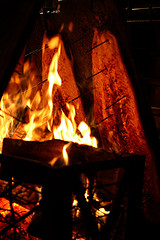










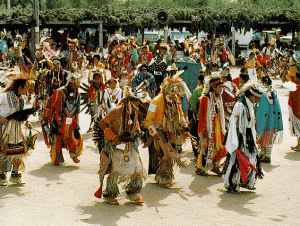






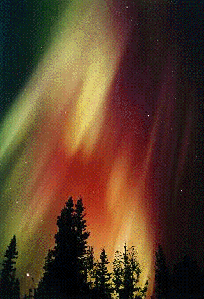










 Long and long ago there was a young girl that people would call Aiyaiyesh, which roughly would translate into English as “stupid.” Even today, if you don’t listen to your elders, people will say, “Ah, you’re so aiyaiyesh.”
Long and long ago there was a young girl that people would call Aiyaiyesh, which roughly would translate into English as “stupid.” Even today, if you don’t listen to your elders, people will say, “Ah, you’re so aiyaiyesh.”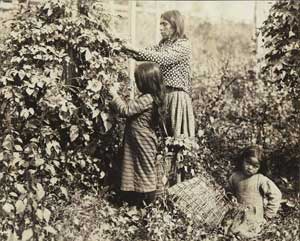
 Other kids her age would help their elders tan deer hides.
Other kids her age would help their elders tan deer hides. 
 Other kids her age would gather cedar bark on the hottest days of the year to help their elders. But not the girl who was aiyaiyesh…she would just sit underneath the cedar tree, watching the world go by.
Other kids her age would gather cedar bark on the hottest days of the year to help their elders. But not the girl who was aiyaiyesh…she would just sit underneath the cedar tree, watching the world go by. Finally, one day, the cedar tree couldn’t take it anymore and said, “Ah, you are so aiyaiyesh. All you ever do is sit underneath me. Now you watch. I’m going to show you how to do something.”
Finally, one day, the cedar tree couldn’t take it anymore and said, “Ah, you are so aiyaiyesh. All you ever do is sit underneath me. Now you watch. I’m going to show you how to do something.” Now circles are very sacred to most Native people. We’re taught that the world is a circle…when the wind moves in its strongest power, it moves in a circle. In our ceremonies, when we pray, we turn in a circle because we are taught when you turn in a circle, one of your sins falls off.
Now circles are very sacred to most Native people. We’re taught that the world is a circle…when the wind moves in its strongest power, it moves in a circle. In our ceremonies, when we pray, we turn in a circle because we are taught when you turn in a circle, one of your sins falls off.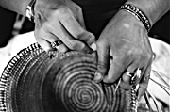 As she sewed the circles together, she created the very first hard root cedar basket. This is a very important thing in the Pacific Northwest. Not only is it traditionally used to hold berries, and other foods, but the baskets were so well made, they would hold water. In fact one proof of moving into adulthood was to make four baskets which would then as a test, be dipped into water. If they would hold the water, then the basket maker was recognized as an adult. The baskets would then be given away to train the young person to always be generous. This type of basket was also used for cooking.
As she sewed the circles together, she created the very first hard root cedar basket. This is a very important thing in the Pacific Northwest. Not only is it traditionally used to hold berries, and other foods, but the baskets were so well made, they would hold water. In fact one proof of moving into adulthood was to make four baskets which would then as a test, be dipped into water. If they would hold the water, then the basket maker was recognized as an adult. The baskets would then be given away to train the young person to always be generous. This type of basket was also used for cooking.  After being filled with water, small rocks that had been heated in a fire would be dropped into the water of the basket. The heat of the rocks would make the water boil, and you could then cook soups and stews.
After being filled with water, small rocks that had been heated in a fire would be dropped into the water of the basket. The heat of the rocks would make the water boil, and you could then cook soups and stews.  and you’d feel really aiyaiyesh.
and you’d feel really aiyaiyesh.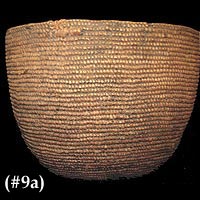
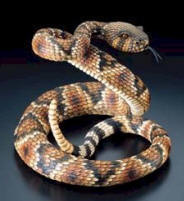 “What’s the matter with you, almost stepping on innocent people!” the rattlesnake hissed.
“What’s the matter with you, almost stepping on innocent people!” the rattlesnake hissed.
 She looked up from her tears and saw Patu, the Mountain, was talking to her.
She looked up from her tears and saw Patu, the Mountain, was talking to her.

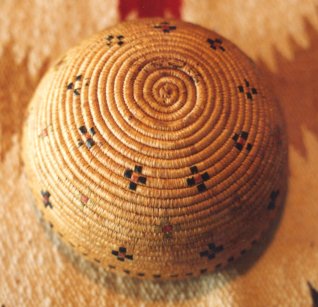 The stars came out at night and formed constellations that she used for designs.
The stars came out at night and formed constellations that she used for designs.



 Everywhere she went, in every direction, she found patterns and designs.
Everywhere she went, in every direction, she found patterns and designs.

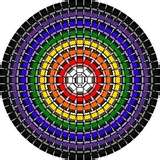 Part of their psychological growth comes from discovering that there are all sorts of other patterns (of behavior) around them that they can also use.
Part of their psychological growth comes from discovering that there are all sorts of other patterns (of behavior) around them that they can also use.



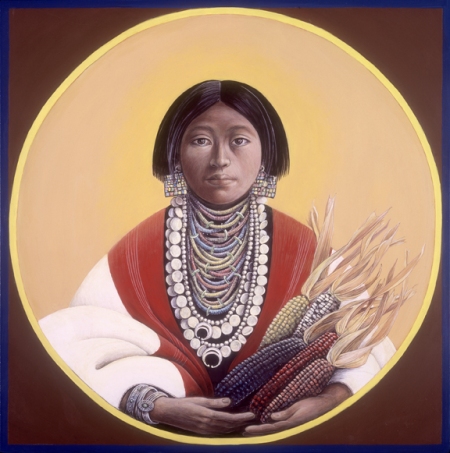
 a can of black beans , a can of hominy, and a few cut up zucchini and yellow squash
a can of black beans , a can of hominy, and a few cut up zucchini and yellow squash  into a chicken stock (although I’ve been trying to be as productive as possible lately, so I’ve been freezing pork stock which I’ll use instead). There’s sometimes mention of the Fourth Sibling—the spicy brother Chili, so I’ll toss in enough crushed or ground red chili pepper until I’m satisfied.
into a chicken stock (although I’ve been trying to be as productive as possible lately, so I’ve been freezing pork stock which I’ll use instead). There’s sometimes mention of the Fourth Sibling—the spicy brother Chili, so I’ll toss in enough crushed or ground red chili pepper until I’m satisfied.